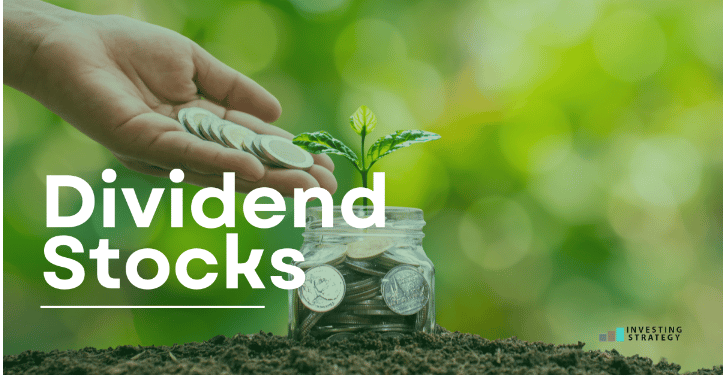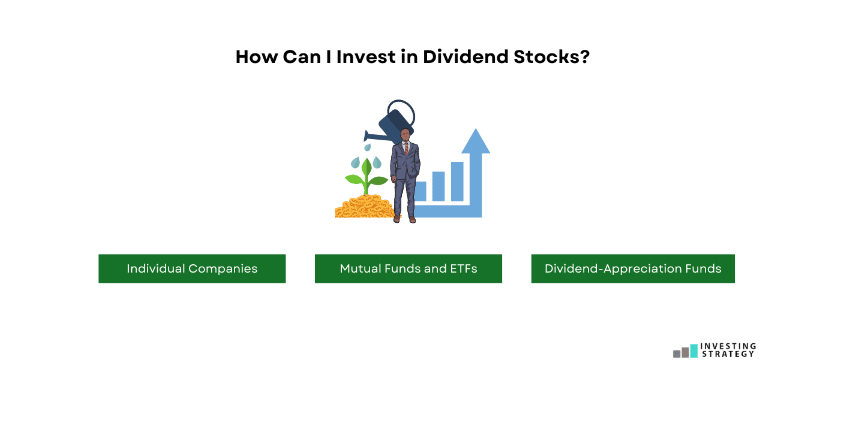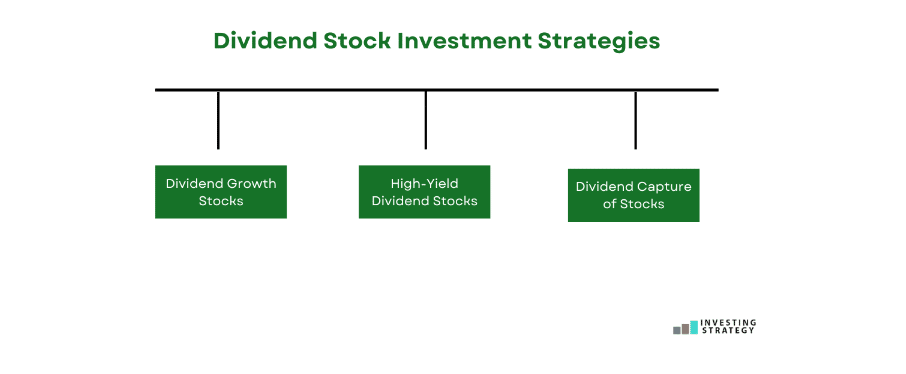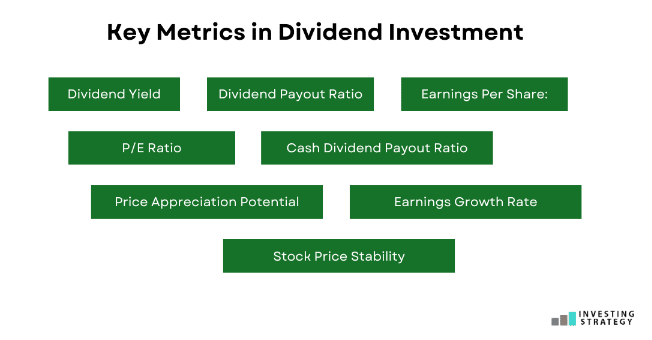When you invest in dividend stocks, what are you really investing in? How can you invest in dividend stocks? And how can you make sure that your investments are safe? Here’s what you need to know about this kind of investment.
Concise Overview
- Dividend stocks are companies that pay dividends to investors.
- As a shareholder, you are entitled to receive periodic payments from companies as long as you own shares of the company
- You can buy stocks from individual firms through an online brokerage account or mutual funds
Dividend stock investing is a great way to grow your money, providing you with a steady income stream. It’s also a strategy anyone can use, from the average trader saving for retirement to a professional investor looking for a new way to diversify portfolios. However, it requires careful consideration and research, as well as a willingness to put in the time and effort to find good stocks that will pay dividends.
This guide will teach you everything about dividend stock investing and how to get started.
What Are Dividend Stocks?

A dividend is a portion of a company’s earnings paid to its shareholders, typically as cash payments. A dividend typically occurs when a company distributes some or all of its earnings to shareholders. The dividend payment amount may vary depending on the company and its performance.
A dividend stock is a company that pays dividends to its owners or shareholders. These are periodic payments (often quarterly) of a certain percentage of the company’s stock price. They can come from regular income from dividend payments or capital appreciation of the stock price. Dividend stocks tend to be blue-chip companies with solid financials, but some penny-stock companies pay dividends.
What Are Dividend Aristocrats?
Dividend Aristocrats are companies that have consistently raised their dividends for at least 25 years. They’re considered some of the most stable companies in the market because they’ve proven that they can continue to grow their business and pay out dividends year after year.
The Dividend Aristocrats Index was created by Standard & Poor’s in 1989 to track stocks with high yields and long histories of dividend growth. Today, it’s one of the most popular indices used by investors to track dividend stocks. It started with twenty-six companies and spread out to accommodate members of the S&P 500 Index.
There are 65 companies on the current dividend aristocrats list. It includes household names like Coca-Cola (KO) and Johnson & Johnson (J&J) and lesser-known firms such as Illinois Tool Works (ITW) and Expeditors International of Washington (EXPD). In addition to being a good indicator of a company’s financial strength, the list is an excellent way to choose a reliable dividend stock.
Dividend Stock and Dividend Fund
Dividend stocks are individual stocks that pay dividends to investors. When a company pays a dividend, it distributes its earnings to shareholders. Dividend funds allow investors to purchase stocks that pay dividends in one transaction rather than buying each stock individually. These funds may include other stocks so the investor can get exposure to different industries and sectors.
How Do Dividend Stocks Work?
Let’s say you’re a shareholder in a company that makes widgets. The company has been doing well lately and has decided it’s time to pay out some of its earnings to shareholders. So, it pays out $100,000 in dividends.
That means you’ll get a small part of $100,000 for every share of stock you own. The payout depends on how many shares you own and how many shares there are in total in the company. That may not seem like much—and it’s not!—but it can add up over time.
The primary benefit of dividend stocks is stock appreciation, providing consistent income throughout the year. These dividends can help pay your monthly expenses, such as mortgage and utility bills. You can reinvest them into the same or another stock with similar characteristics to continue building your wealth.
The downside is that they’re not entirely immune to downturns in the market. When the markets are at their worst, dividend stocks can be affected. Also, the dividends are fixed. This means if you sell at a higher price than what you paid for them, you won’t necessarily see any benefit from that appreciation.
Finally, there’s no guarantee that dividends will keep coming after a company has paid them out for several years. In fact, most companies stop paying dividends because they have other priorities, like reinvesting in their business or facing a financial crisis.
How Can I Invest in Dividend Stocks?
When investing in dividend stocks, there are a few ways to do it. You can try to go all out yourself or move funds through intermediaries. In short, you can buy dividend stocks through the following medium:

Individual Companies
You can buy dividend stocks directly from individual companies that pay dividends. This can be an excellent way to start your investing journey, as it allows you to focus on companies that meet your risk tolerance and investment goals. However, it can also be difficult because many factors go into buying stocks that aren’t always easy for beginners to understand.
Mutual Funds and ETFs
A second option is to invest in a high-yield mutual fund or ETF (exchange-traded fund). These funds contain many different stocks from many companies and offer more diversification than buying individual stocks. They also require less work than buying individual stocks because they are managed by professionals who decide what goes into the fund based on their knowledge and experience.
Dividend-Appreciation Funds
Dividend-appreciation funds invest in stocks that pay dividends. The fund manager picks out companies with a history of raising their dividends and then buys stock in those companies. Some funds and ETFs focus on stocks that pay high dividends, while others focus on dividend growth. You can choose between actively managed funds (meaning they have people managing them) or passively managed funds (meaning they track a benchmark).
Dividend Stock Investment Strategies
The key to success with dividend stock investing is finding good companies that will continue to pay dividends well into the future. Here are three strategies for finding those companies:

Dividend Growth Stocks
These are high-quality companies that have consistently raised their dividends over time. They’re great for long-term growth and income because they have strong balance sheets and generate consistent profits for shareholders (and therefore pay out high dividends). You can enjoy these steady returns even when the market goes through rough patches since these companies tend to offer consistent results year after year.
Here are some tips to help you find dividend stocks that will make your portfolio more profitable:
- Look for companies consistently increasing their payouts for at least ten years.
- Check the payout ratio—how much of the company’s earnings do they pay out in dividends? Around 35% is usually a good target to aim for.
- Make sure the company has a history of raising its payout by at least 5% per year, as well as keeping it above the inflation rate.
- Look at how long it’s been since management cut its dividend—the longer, the better.
- Look at how much cash flow (the money left over after paying expenses and taxes) a company has compared with its debt—the higher this ratio, the better
- Finally, just like any other investment decision you make—do your research. Talk with your financial planner.
The best part about investing in dividend growth stocks is that they tend to be less volatile than other stocks. This makes them ideal for investors looking for income without losing sleep over their investments.
High-Yield Dividend Stocks
These are riskier than growth stocks but can still be suitable investments if you carefully research and pick carefully. They tend to be smaller companies that pay higher dividends than many other stocks—but they also fluctuate wildly.
When looking for high-yield dividend stocks, it’s essential to ensure that the company has solid fundamentals and can sustain its dividend payments over time. High-quality companies with strong balance sheets will often offer more stable returns than those with weaker fundamentals or balance sheets. Here are tips to help:
- Look for strong financial metrics. Look at the company’s net income, revenue growth and debt load as a percentage of assets.
- Find companies with a long track record of paying dividends.
- Look at management style. The management team should have a proven track record of success, and they should be honest and transparent with their investors.
- Consider the cash flow. You want to make sure that the company has enough money coming in from its operations to cover its costs and pay dividends.
- Look at the company’s competitors to see how they stack up.
The most important thing is that not all high-yield dividend stocks are created equal. You should always be careful when investing in a company and make sure you know what you’re buying into. If you want to invest in high-yield dividend stocks, research before buying.
Dividend Capture of Stocks
Dividend Capture is a strategy that allows investors to take advantage of the rise in the value of their stocks while also receiving a dividend payment. This is accomplished by selling shares that have not yet paid dividends and then using the proceeds from the sale to purchase shares that have already paid dividends. This way, investors can receive capital gains and dividends without waiting for their stocks to pay a dividend before selling them.
- Dividend capture is a great way to grow your investment portfolio, but it can be challenging to know when to capture a dividend.
- You should only capture dividends if you understand what the company does, how well it performs, and how likely it is to continue growing its profits in the future.
- The best way to make sure that you’re investing in a company that has room for growth is by reading its annual report and looking at its financial statements as well as its balance sheet.
- If you don’t understand what those things mean, take some time to learn about them before investing in any stocks.
- Don’t rely on anyone else’s opinion about whether or not a company will perform well in the future—investigate for yourself.
The drawback of dividend capture is that it’s essentially a stock market strategy, which can be very risky. Also, it’s not immune to market fluctuations.
Things to Watch Out For When Investing
When you invest in dividend stocks, there are some things to watch out for. Here are three common pitfalls that can cause trouble:
- Interest rate on dividend funds: When you invest in dividend stocks, you rely on dividends to grow your portfolio. However, if you’re investing in a fund that has an interest rate like ETF, it will affect your dividends.
- Reduced dividends: Companies can reduce their dividends if they don’t think they will continue paying them out (for example, if their earnings decline). This may mean that your investment is worth less than what you paid.
- Taxes through taxable brokerage accounts: If your brokerage account isn’t held in a tax-advantaged account, then taxes will be due on all your income from dividends.
Keeping a close eye on the three pitfalls above can help you make the right investment decision.
Key Metrics in Dividend Investment
When it comes to dividend investing, there are a lot of metrics you can use to measure your success. But which ones matter most? Here are some of the most important:

- Dividend Yield: The dividend yield is the dividend per share divided by the price per share. It’s one of the most critical metrics to remember when evaluating a stock because it tells you how much of your investment income will come from dividends. A higher yield is better and indicates that a company pays out more money in dividends than other companies do with similar earnings.
- Dividend Payout Ratio: This is the percentage of earnings paid out as dividends. Companies with a high payout ratio tend to be more stable because they don’t have to worry about spending their profits on growth projects or other initiatives that may not pay off immediately. They can focus on paying out dividends instead.
- Earnings Per Share: Earnings per share is essentially how much money each share of stock has earned for investors over time. It shows how much money was made by the company every year and what percentage of that went back into paying out dividends to its shareholders (as opposed to helping fund operations).
- P/E Ratio: The P/E ratio measures how much money investors are willing to pay for a share of the company’s stock. For example, if a company has a P/E of 10 and your option is to buy a share at $50 or wait until it goes up to $60 and buys it. You’d probably be better off waiting until it goes up to $60 and buying it then because investors are currently valuing that share at an additional $10.
- Cash Dividend Payout Ratio: This payout ratio tells you what percentage of earnings are paid out as dividends. The higher this number is, the less likely that company is to reinvest its earnings in growth projects or acquisitions—which may be something you want in your portfolio.
- Price Appreciation Potential: This metric measures the expected future performance of a stock. It is calculated by taking into account the company’s current price, its dividend yield and the projected earnings growth rate. The higher the PAP, the more likely you are to see significant gains in your investment over time.
- Earnings Growth Rate: This metric shows how much cash flow (earnings) is generated by a company’s business operations each year. A positive earnings growth rate means that business operations are growing; if they’re shrinking, this will negatively impact profits and ultimately lead to lower dividends for investors in time.
- Stock Price Stability: This metric shows how volatile a stock’s price is over time compared with other stocks in its industry group or benchmark index (i.e., S&P 500). You can find this information on websites like Yahoo Finance or Google Finance by clicking on “Stock Price History” under “Historical Prices” for any given stock under “Financials.” If your company has an unusually low volatility rate relative to other companies within its industry group or index—which indicates that it’s less likely to experience sudden drops in value—then you can feel more confident about your investment.
In a nutshell, it’s essential to understand the key metrics in dividend investment. The metrics help investors to make better decisions and reduce the risk of investing.
How Are Dividend Stocks Taxed?
Dividend stocks are taxed in various ways, depending on whether or not you own the stock personally or through an account. If you own the stock personally, your dividends will be subject to tax at a rate of up to 20%, depending on your tax bracket. However, the range is mostly lower than income tax, up to 37% and more.
While most dividends qualify for lower tax rates, ordinary dividends do not and are subject to marginal tax rates. Also, if you hold your stocks in a taxable account, such as a joint account or ETF, you’ll pay tax on the dividends you receive and realise gains. The rate at which your stock is subject to capital gains depends on your income level and how long you’ve held onto the assets. To avoid tax, you should keep your dividends in tax-advantaged accounts such as traditional or Roth IRA.
Conclusion
Dividend stocks are a great way to invest your money. They’re more stable than other types of stocks and can provide you with returns over time, as well as some tax benefits. There are several strategies you can use when investing in dividend stocks. You can buy individual stocks or invest in an index fund. You can also choose to focus on specific industries or regions. You should consider how much risk you’re willing to take on when choosing the right strategy for you.
You’ll also want to keep an eye on metrics such as price-to-earnings ratio (P/E), which tells you how much it costs per share; dividend yield, which tells you what percentage of each dollar invested is paid out in dividends; and price appreciation potential (PAP), which shows how much a stock has increased in value over time compared with other similar companies within its industry group.
Finally, remember that dividends are taxable income, so make sure you know what taxes apply before investing.
This article has been prepared for information purposes only. It does not constitute advice, and no party accepts any liability for either accuracy or for investing decisions made using the information provided.
Further, it is not intended for distribution to, or use by, any person in any country or jurisdiction where such distribution or use would be contrary to local law or regulation.
